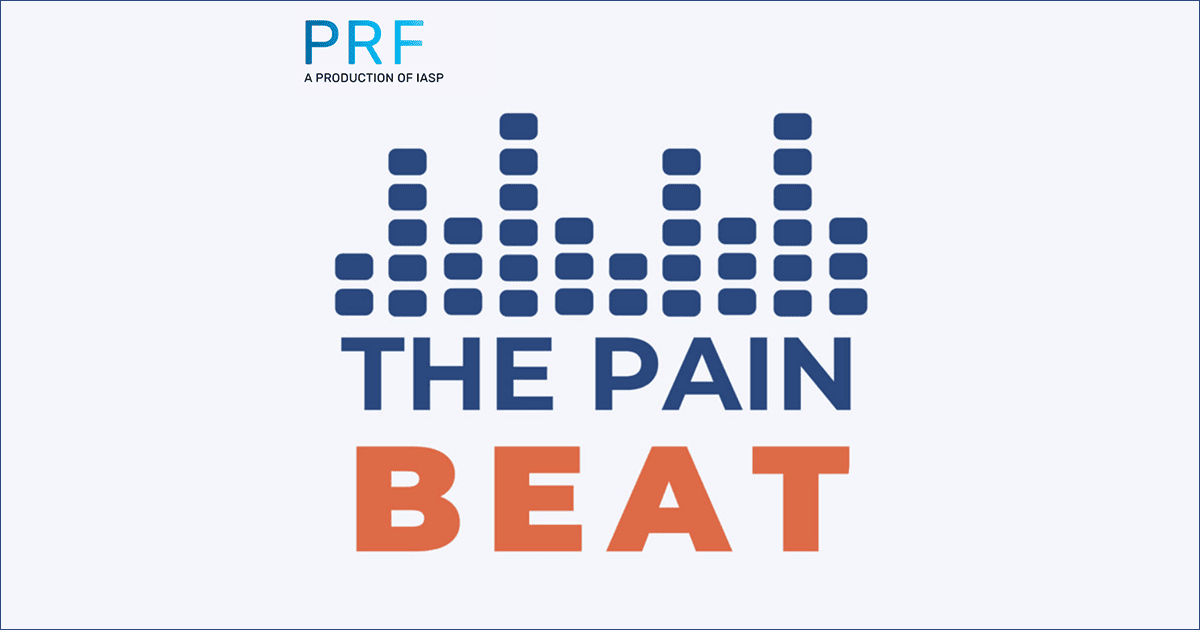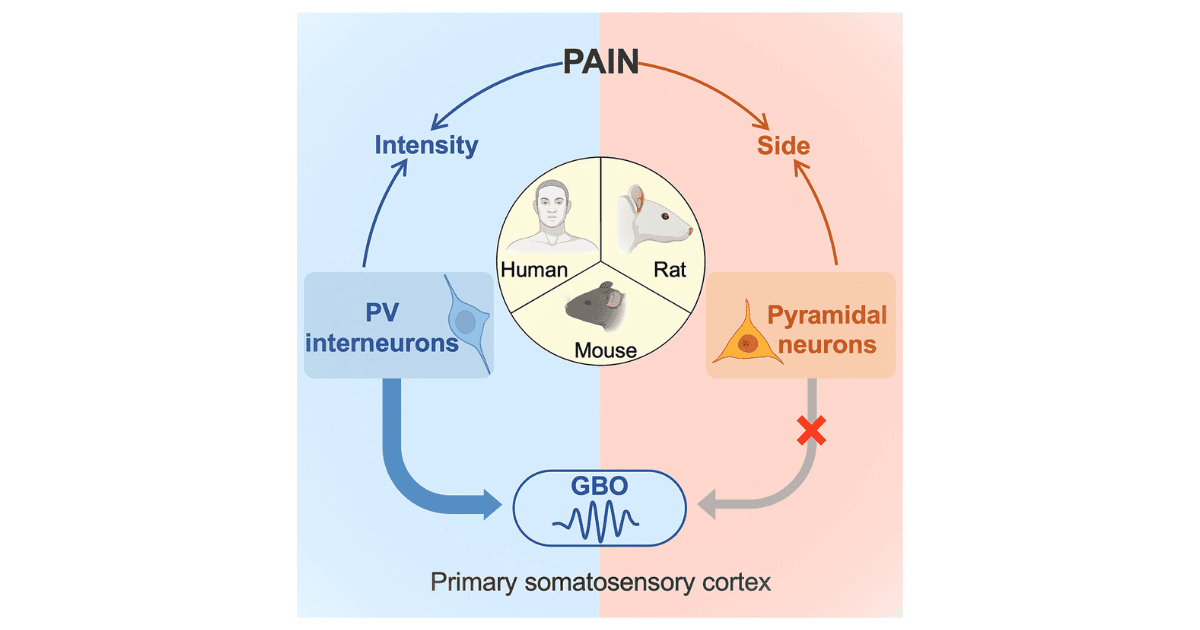
Fostering discussion and collaboration that speeds up the acquisition of new knowledge and its translation into novel pain treatments.
PRF News
Papers Of The Week
Human assembloid model of the ascending neural sensory pathway.
The dorsal column nuclei scale mechanical sensitivity in naive and neuropathic pain states.
During pathological conditions, tactile stimuli can aberrantly engage nociceptive pathways leading to the perception of touch as pain, known as mechanical allodynia. The brain stem dorsal column nuclei integrate tactile inputs, yet their role in mediating tactile sensitivity and allodynia remains understudied. We found that gracile nucleus (Gr) inhibitory interneurons and thalamus-projecting neurons are differentially innervated by primary afferents and spinal inputs. Functional manipulations of these distinct Gr neuronal populations bidirectionally shifted tactile sensitivity but did not affect noxious mechanical or thermal sensitivity. During neuropathic pain, Gr neurons exhibited increased sensory-evoked activity and asynchronous excitatory drive from primary afferents. Silencing Gr projection neurons or activating Gr inhibitory neurons in neuropathic mice reduced tactile hypersensitivity, and enhancing inhibition ameliorated paw-withdrawal signatures of neuropathic pain and induced conditioned place preference. These results suggest that Gr activity contributes to tactile sensitivity and affective, pain-associated phenotypes of mechanical allodynia.
Peripheral nervous system microglia-like cells regulate neuronal soma size throughout evolution
Microglia, essential in the central nervous system (CNS), were historically considered absent from the peripheral nervous system (PNS). Here, we show a PNS-resident macrophage population that shares transcriptomic and epigenetic profiles as well as an ontogenetic trajectory with CNS microglia. This population (termed PNS microglia-like cells) enwraps the neuronal soma inside the satellite glial cell envelope, preferentially associates with larger neurons during PNS development, and is required for neuronal functions by regulating soma enlargement and axon growth. A phylogenetic survey of 24 vertebrates revealed an early origin of PNS microglia-like cells, whose presence is correlated with neuronal soma size (and body size) rather than evolutionary distance. Consistent with their requirement for soma enlargement, PNS microglia-like cells are maintained in vertebrates with large peripheral neuronal soma but absent when neurons evolve to have smaller soma. Our study thus reveals a PNS counterpart of CNS microglia that regulates neuronal soma size during both evolution and ontogeny.
Cannabinoids in headache: helpful or harmful?
Cannabinoids have gained attention as a potential treatment for headache disorders, including migraine and cluster headache. While some studies suggest cannabinoids may provide analgesic and anti-inflammatory effects, concerns remain regarding their potential for overuse headache, cognitive impairment, and psychological dependence. This study critically evaluates the current evidence on cannabinoids in headache treatment, weighing their benefits and risks.
Vascular motion in the dorsal root ganglion sensed by Piezo2 in sensory neurons triggers episodic neuropathic pain.
Spontaneous pain, characterized by episodic shooting or stabbing sensations, is a major complaint among neuropathic pain patients, yet its mechanisms remain poorly understood. Recent research indicates a connection between this pain condition and “clustered firing,” wherein adjacent sensory neurons fire simultaneously. This study presents evidence that the triggers of spontaneous pain and clustered firing are the dynamic movements of small blood vessels within the nerve-injured sensory ganglion, along with increased blood vessel density/angiogenesis and increased number of pericytes around blood vessels. Pharmacologically or mechanically evoked myogenic vascular responses increase both spontaneous pain and clustered firing in a mouse model of neuropathic pain. The mechanoreceptor Piezo2 in sensory neurons plays a critical role in detecting blood vessel movements. An anti-VEGF monoclonal antibody that inhibits angiogenesis effectively blocks spontaneous pain and clustered firing. These findings suggest targeting Piezo2, angiogenesis, or abnormal vascular dynamics as potential therapeutic strategies for neuropathic spontaneous pain.
The causal role of brain circuits in osteoarthritis pain.
Osteoarthritis (OA) is a leading cause of chronic pain worldwide, resulting in substantial disability and placing a substantial burden on patients and society. The hallmark symptom of OA is joint pain. Despite extensive research, new treatments for OA pain remain limited, partly owing to a lack of understanding of underlying pain mechanisms. For a long time, OA pain was seen as a reflection of nociceptive activity at the joint level, and the brain has been viewed as a passive recipient of such information. In this Review, we challenge these concepts and discuss how, over time, the activation of peripheral nociceptors leads to adaptations in the brain that dictate the properties and experience of OA pain. These adaptations are further influenced by the inherent properties of the brain. We review general concepts that distinguish pain from nociception, present evidence on the incongruity between joint injury and experience of OA pain, and review brain circuits that are crucial in the perception of OA pain. Finally, we propose a model that integrates nociception, spinal-cord mechanisms, and central nervous system dynamics, each contributing uniquely to pain perception. This framework has the potential to inform the development of personalized treatment strategies.
Sculpting excitable membranes: voltage-gated ion channel delivery and distribution.
The polarized and domain-specific distribution of membrane ion channels is essential for neuronal homeostasis, but delivery of these proteins to distal neuronal compartments (such as the axonal ends of peripheral sensory neurons) presents a logistical challenge. Recent developments have enabled the real-time imaging of single protein trafficking and the investigation of the life cycle of ion channels across neuronal compartments. These studies have revealed a highly regulated process involving post-translational modifications, vesicular sorting, motor protein-driven transport and targeted membrane insertion. Emerging evidence suggests that neuronal activity and disease states can dynamically modulate ion channel localization, directly influencing excitability. This Review synthesizes current knowledge on the spatiotemporal regulation of ion channel trafficking in both central and peripheral nervous system neurons. Understanding these processes not only advances our fundamental knowledge of neuronal excitability, but also reveals potential therapeutic targets for disorders involving aberrant ion channel distribution, such as chronic pain and neurodegenerative diseases.
The inflammatory and genetic mechanisms underlying the cumulative effect of co-occurring pain conditions on depression.
Chronic pain conditions frequently coexist and share common genetic vulnerabilities. Despite evidence showing associations between pain and depression, the additive effect of co-occurring pain conditions on depression risk and the underlying mechanisms remain unclear. Leveraging data from 431,038 UK Biobank participants with 14-year follow-up, we found a significantly increased risk of depression incidence in individuals reporting pain, irrespective of body site or duration (acute or chronic), compared with pain-free individuals. The depression risk increased with the number of co-occurring pain sites. Mendelian randomization supported potential causal inference. We constructed a composite pain score by combining individual effects of acute or chronic pain conditions across eight body sites in a weighted manner. We found that depression risks increased monotonically in parallel with composite pain scores. Moreover, some inflammatory markers, including C-reactive protein, partially mediated the association between composite pain scores and depression risk. Considering the high prevalence of comorbid depression and pain, pain screening may help identify high-risk individuals for depression.
Meningeal regulatory T cells inhibit nociception in female mice
T cells have emerged as orchestrators of pain amplification, but the mechanism by which T cells control pain processing is unresolved. We found that regulatory T cells (Treg cells) could inhibit nociception through a mechanism that was not dependent on their ability to regulate immune activation and tissue repair. Site-specific depletion or expansion of meningeal Treg cells (mTreg cells) in mice led to female-specific and sex hormone-dependent modulation of mechanical sensitivity. Specifically, mTreg cells produced the endogenous opioid enkephalin that exerted an antinociceptive action through the delta opioid receptor expressed by MrgprD+ sensory neurons. Although enkephalin restrains nociceptive processing, it was dispensable for Treg cell-mediated immunosuppression. Thus, our findings uncovered a sexually dimorphic immunological circuit that restrains nociception, establishing Treg cells as sentinels of pain homeostasis.
About PRF
IASP's Pain Research Forum serves as a nucleus for scientists performing basic, translational, and clinical pain
research, as well as clinicians and industry stakeholders interested in advances in pain research and
management.
About PRF
The interactive web community dedicated to accelerating the discovery of new treatments for pain.
PRF Job Listings
Find information about opportunities in academia, industry, and more.
PRF Editorial Board
We're guided by an international Editorial Board of leading pain researchers.
Contact PRF
PRF welcomes any comments, questions, suggestions, or potential submissions you may have.
IASP Job Board
Find information on interviewing, networking, and even more opportunities.







